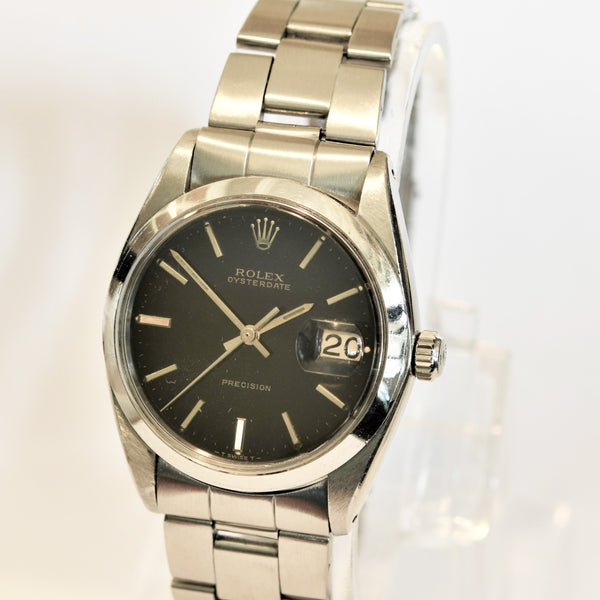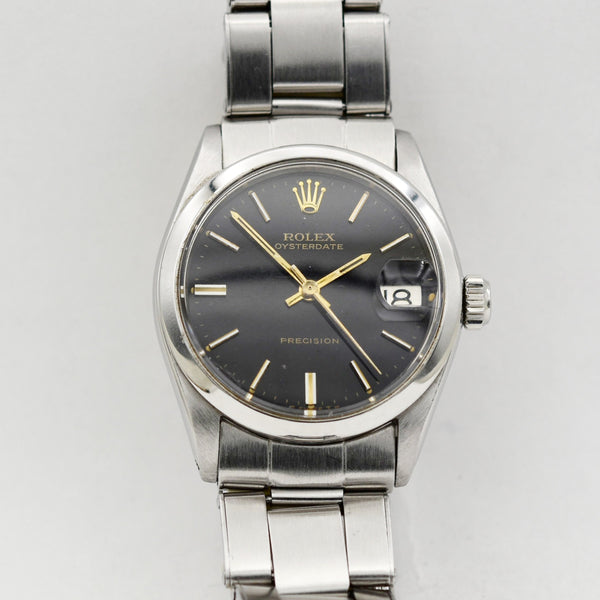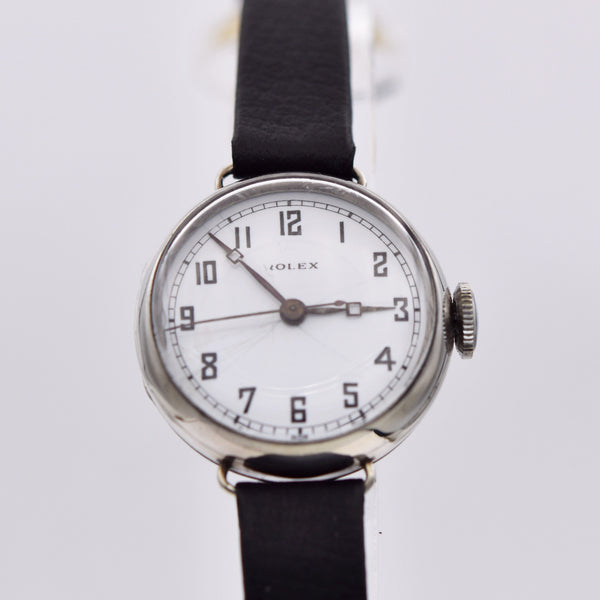SEIKO AUTOMATIC CHRONOGRAPH Vintage Watch
SP39
Sold Out
SEIKO AUTOMATIC CHRONOGRAPH “POGUE” Pepsi bezel in excellent original condition. Stainless steel 17 jewel automatic with dark navy perfect dial with white silver and white luminous markers, silver pointers and Red chronograph hand. Outer tachymeter bezel referred to as a “Pepsi” bezel due to the red and blue color and it is in fine condition with no wear to the enamel. Most notably, the 6139 features an internally rotating bezel with tachymeter scale, operated by the crown. Crystal has a couple of fairly faint scratches but practically unnoticeable. Stainless steel case in very fine condition and shows only minimal wear. Original Seiko bracelet has some scratches and shows normal wear. Case size is 41 mm diameter x 46.5 mm lug to lug x 13.5 mm glass to back of case. Quickset date at number three position is advanced by depressing crown one position for date and further depressing deeper for day and date. Bracelet will fit a wrist of approximately 7 1/4 “. This is a very good looking chronograph that holds close to the wrist and does not look clunky. We are sure you would like to know what the “Pogue” connection and meaning is to the name of this watch. The 6139 is Seiko’s first automatic chronograph movement and also the first automatic chronograph watch worn in space. It was produced from 1969 until around 1979 In 1973, Colonel William Pogue brought his Seiko 6139 Automatic Chronograph on board the Skylab 4 mission as part of his personal kit. He had purchased the watch from the PX at Ellington AFB, and although the watch wasn’t Flight-Approved by NASA, he was allowed to bring it on the flight. The Skylab 4 mission was manned by Pogue, along with astronauts Gerald Carr and Edward Gibson . During the 84-day flight, the astronauts performed experiments pertaining to human endurance in zero gravity, along with observation of the earth, sun, and the Comet Kohoutek. Although the 6139 was never formally approved for mission use, Pogue stated that his operated flawlessly during his time in space. While he never performed an EVA Spacewalk with the Seiko on his wrist (he used a NASA approved Speedmaster Professional for that task), he did use the Seiko to time engine burns. As his story goes, he had been training with the Seiko for six months to a year before the mission launched, as he hadn’t been issued his Speedmaster until late in the process, and had grown familiar with the Seiko, so brought it along without seeking official approval from the NASA brass. Therefore, without a lot of fanfare, the Seiko 6139 did become the first automatic chronograph worn in space. SOLD
Related Items
ROLEX Oysterdate Precision
Sold Out
Rolex Oysterdate Precision: This is a great opportunity to acquire a cool reference 6694 -...
ROLEX Oysterdate Unisex
Sold Out
ROLEX OYSTERDATE PRECISION with DATE - Stainless Steel MID size manual winding 30 mm diameter...
ROLEX STERLING SILVER LADY'S WATCH
Sold Out
ROLEX Sterling silver lady’s rare Unicorn model in fine running condition. Excellent white double sunk...










